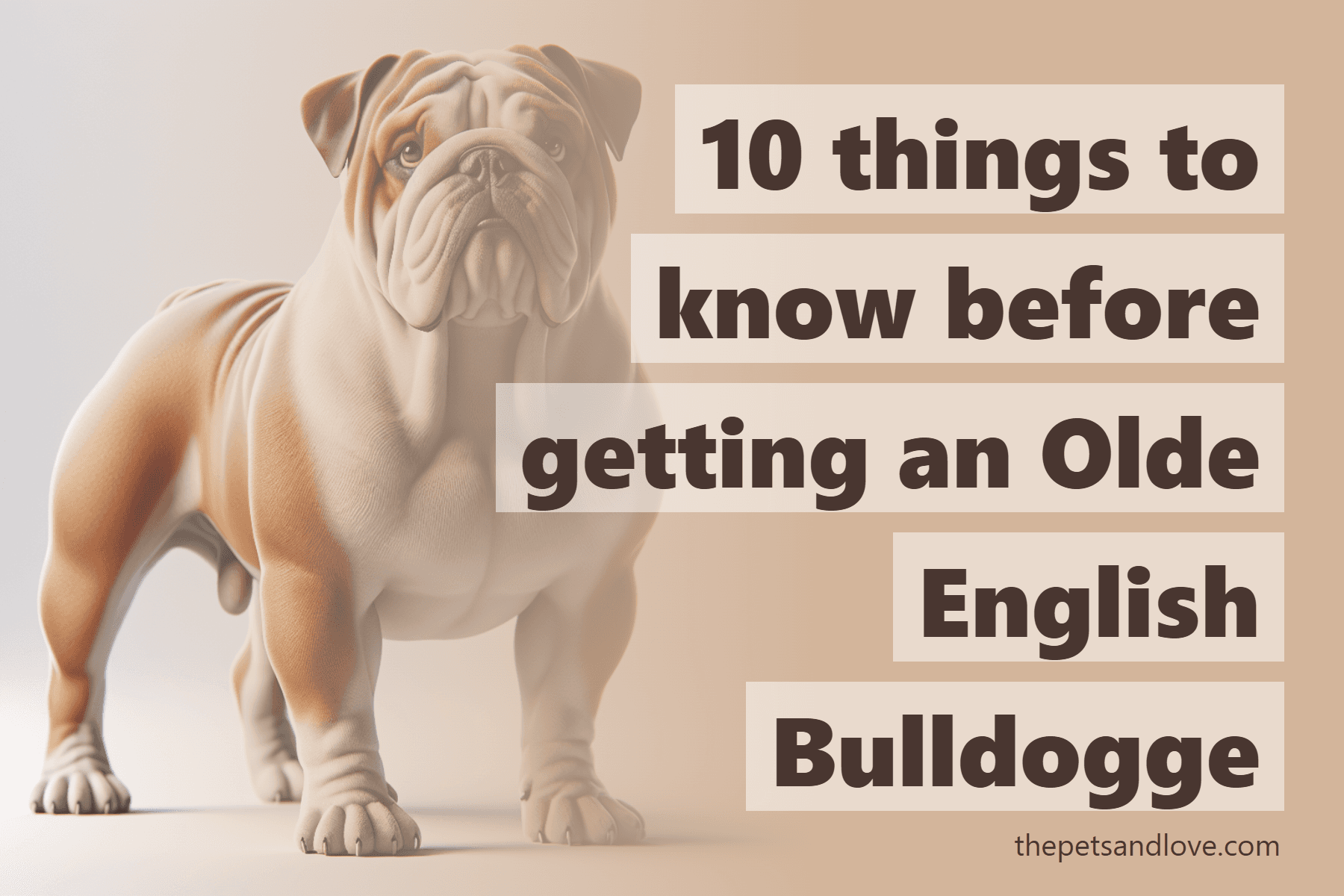10 things to know before getting an Olde English Bulldogge

Thinking about bringing an Olde English Bulldogge into your life? Let me give you the real scoop based on what you’ll actually deal with day to day. These dogs are a charming mix of muscle, loyalty, and a surprising amount of goofiness — but they’re not for everyone. Here’s what you should know before falling for those wrinkly faces.
A Bulldog with a Twist
Despite the old-timey name, the Olde English Bulldogge is a modern breed — a mix of English Bulldogs, American Bulldogs, Bullmastiffs, and American Pit Bull Terriers. The goal was to bring back the athleticism and health of the original bulldogs from centuries ago, without some of the extreme traits we see in today’s English Bulldogs.
And honestly? Mission mostly accomplished.
These dogs are more agile, breathe better, and handle exercise far better than their flat-faced cousins. That said, they’re still brachycephalic (short-nosed), so you’ll need to watch out for overheating, especially in summer.
Temperament: Tough, Tender, and Totally Loyal
Olde English Bulldogges are total sweethearts with their families. They’re confident, protective, and deeply loyal — the kind of dog that will stick by your side and make you feel safe. But they’re not just muscle and bravado. With the right socialization, they’re gentle with kids and can even live peacefully with cats and other pets.
Early socialization is key, though. If they’re not used to other animals or people, they may be wary — especially with unfamiliar dogs. We’ve found that regular walks, meet-ups with other dogs, and low-stress introductions make a big difference.
They’re also pretty smart and eager to please, which makes training easier — but don’t be surprised if they throw in a little stubbornness now and then. Keep training positive and consistent, and they’ll respect you for it.
Health and Grooming: Less Fuss, Still Needs Love
Compared to other bulldog breeds, Olde English Bulldogges are surprisingly hardy. They’ve got fewer breathing issues, stronger joints, and less skin trouble overall — but they’re not totally off the hook. Skin folds can still trap moisture and get infected if you don’t clean them regularly. And yes, they drool. A lot.
Their short coat is easy to maintain — just a weekly brushing and a bath every couple of months (or when they roll in something gross). Keep their ears clean, nails trimmed, and teeth brushed a few times a week. Dental chews help too.
Allergies? These dogs are often called “hypoallergenic,” but in reality, no dog is 100% allergy-free. Their low-shedding coat and minimal dander are a plus, but the drool can be a trigger for some folks.
Exercise and Energy: More Than You’d Expect
Don’t let their stocky build fool you — these dogs have energy to burn. They need daily exercise to stay fit and happy. Walks, playtime, and short jogs are great, but avoid pushing them in hot weather due to their breathing structure.
They love to chew, so stock up on tough toys. Without enough stimulation, they’ll find their own “projects” — like your furniture.
They’re not the best choice for tiny apartments unless you’re really committed to daily outdoor time. A yard or regular access to open space is ideal.
Diet and Appetite: Big Dog, Big Hunger
These dogs love their food and aren’t shy about begging for it. Stick to high-quality, nutrient-rich kibble that fits their activity level and size. Divide meals into two servings a day to help prevent bloating.
If you’re doing treat-based training (which works great with this breed), factor those calories into their daily total. And always keep fresh water available — they’ll need it, especially after exercise.
Final Thoughts
The Olde English Bulldogge is a solid, loving companion with a bit of edge and a ton of heart. If you’re looking for a protective, playful, affectionate dog who’s sturdier and healthier than many bulldog breeds, this one might be your match. Just be ready for drool, a stubborn streak, and the occasional snore-filled nap on your lap.
With the right care, training, and environment, these dogs are absolute gems — loyal, goofy, and full of personality.
